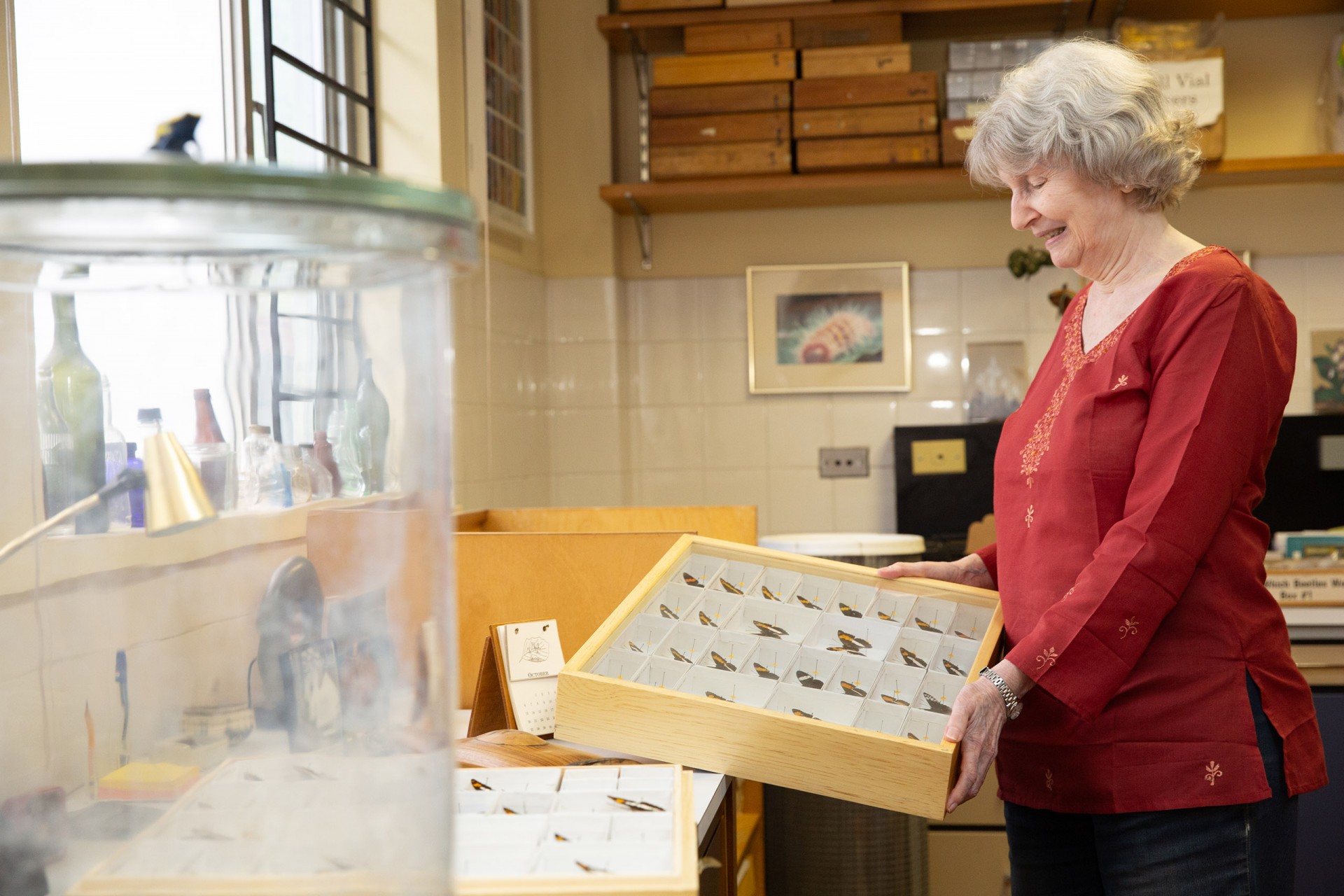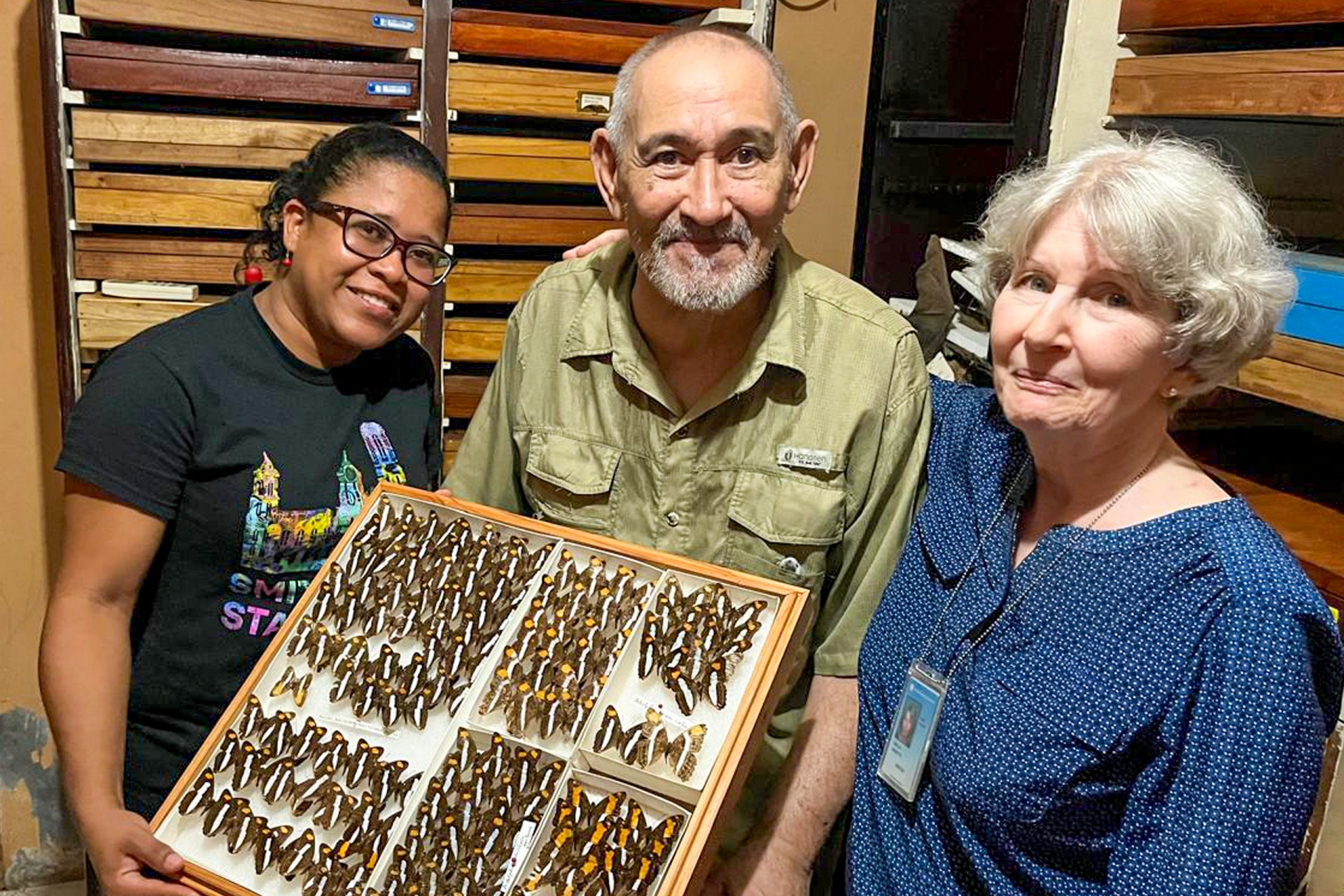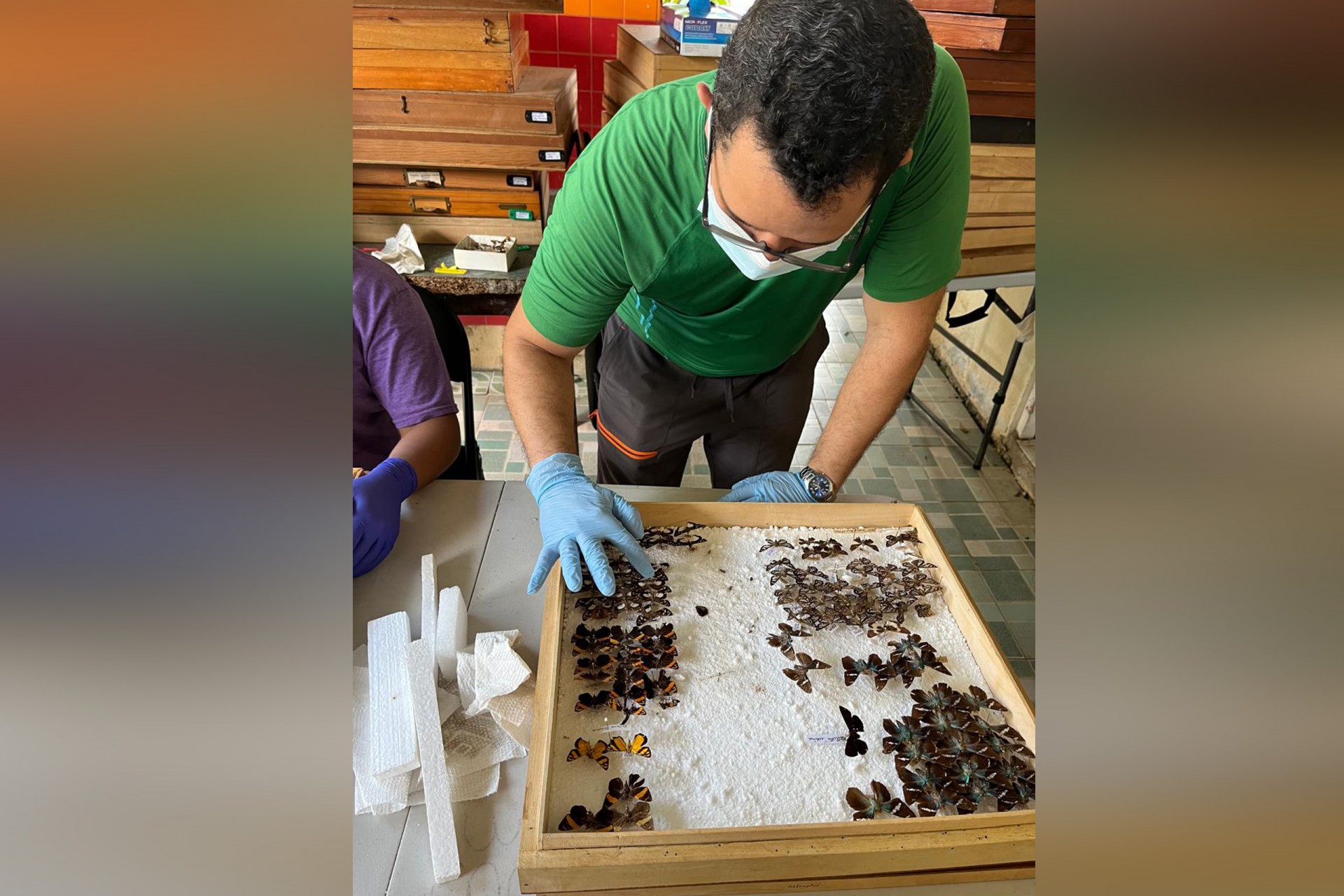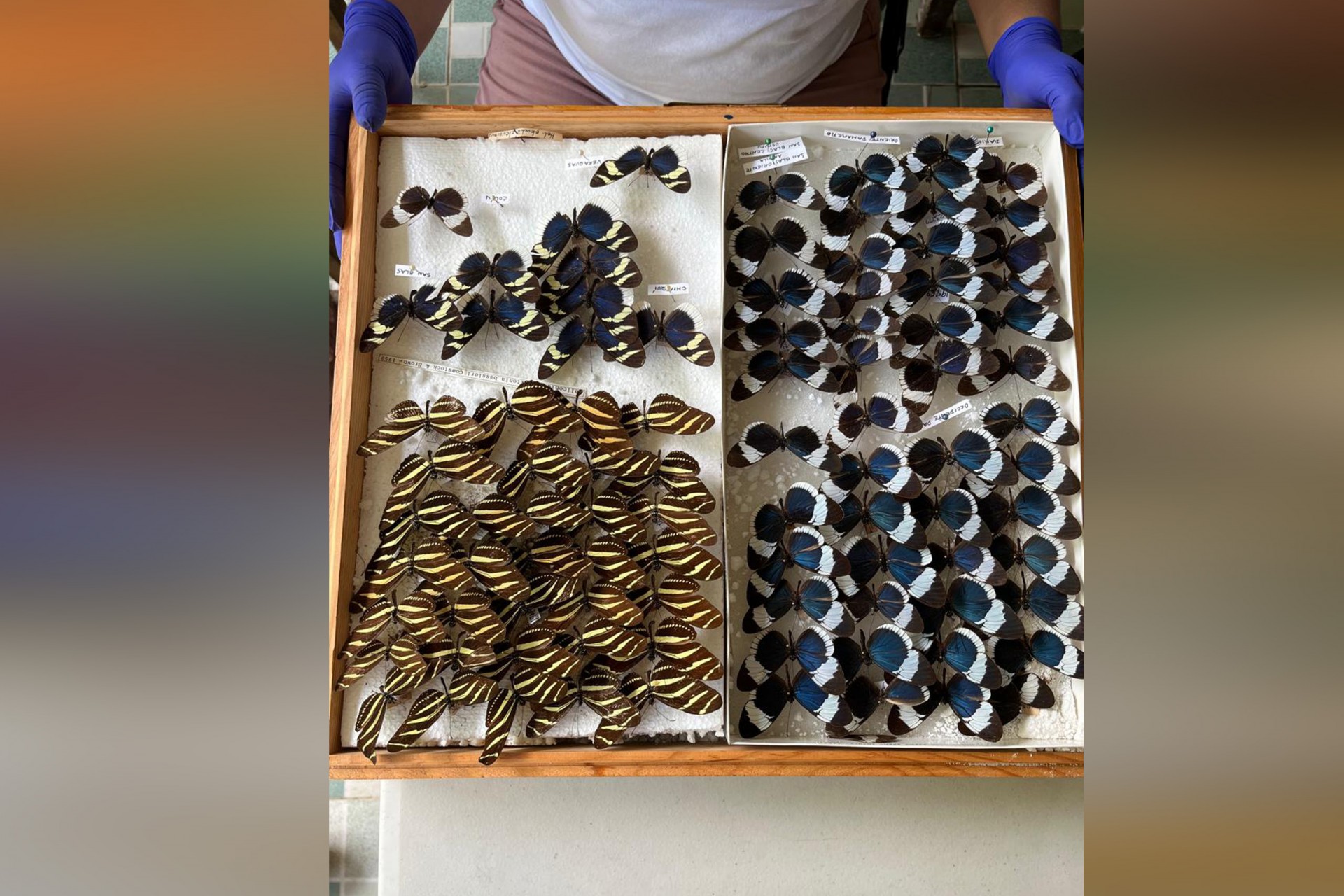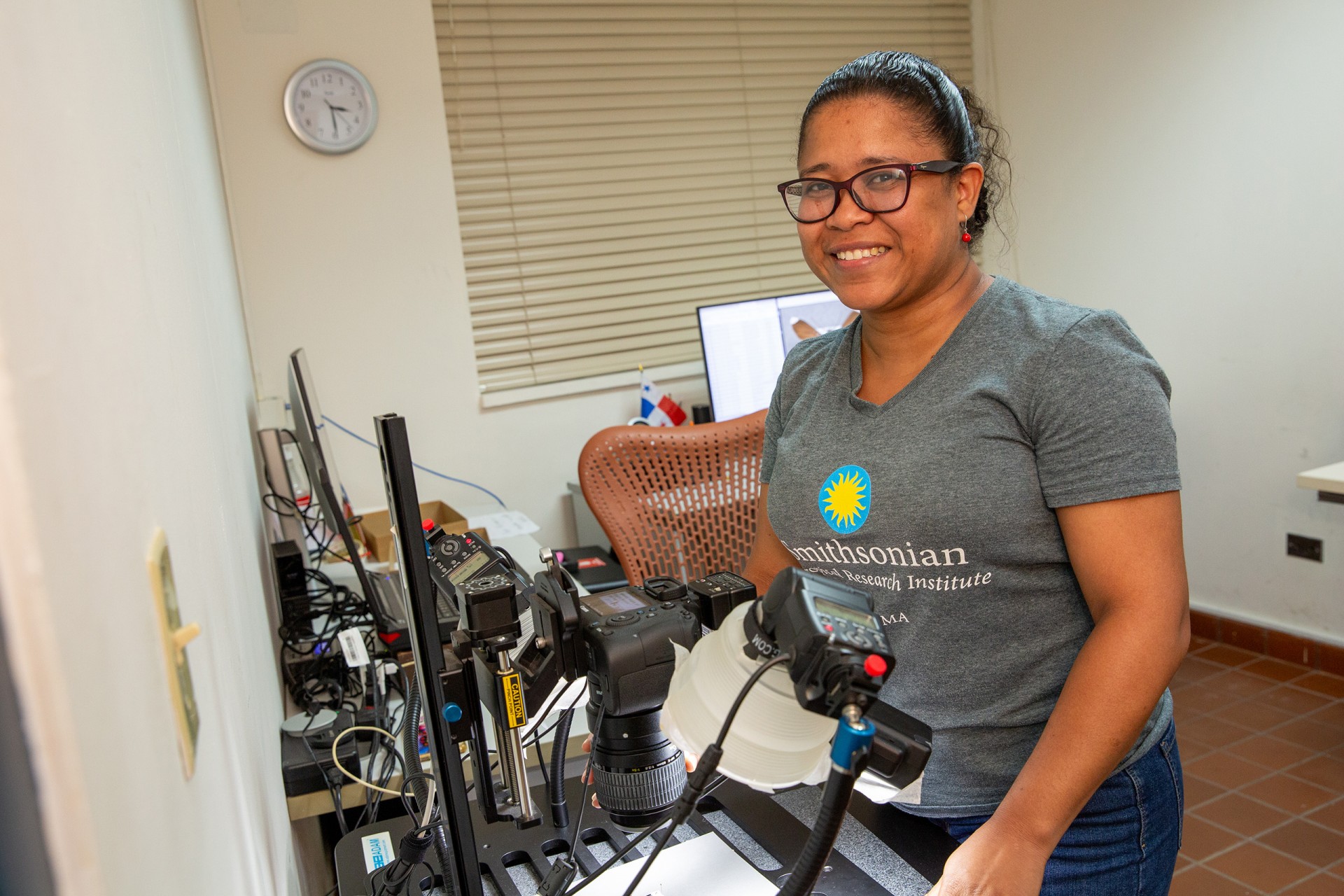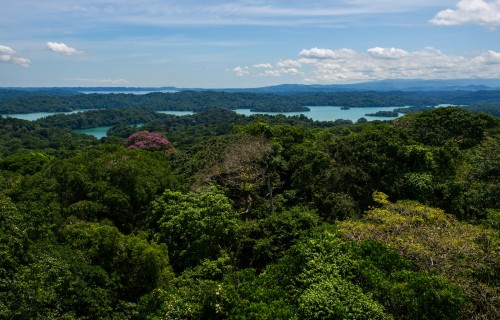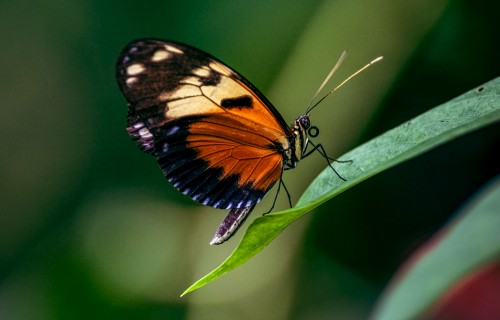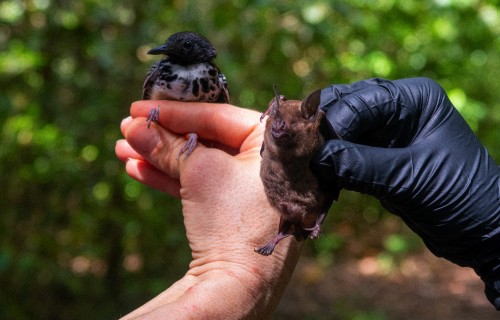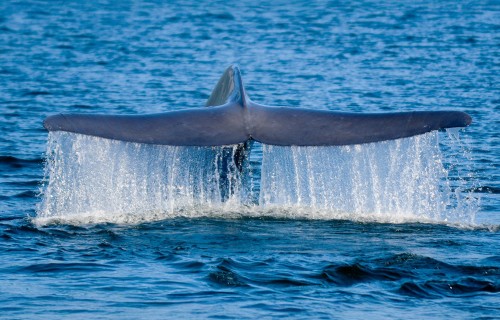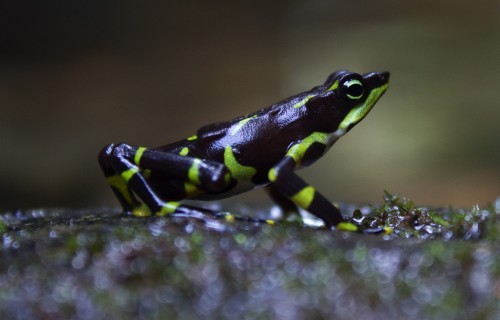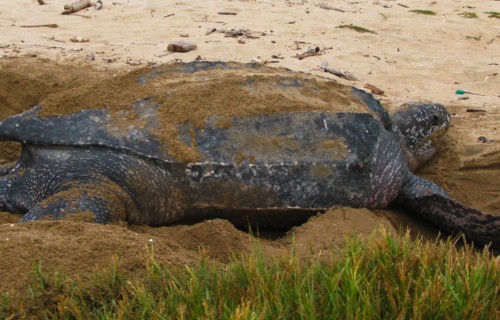Smithsonian science helps understand blue whale migratory and foraging patterns to inform conservation strategies
Collecting
and caring
A lifelong passion for tropical
Insects leads to generous support
by Vanessa Crooks
A fund set up by STRI staff scientist Annette Aiello intends to provide long-term funding for the preservation and management of the insect collection at the Smithsonian Tropical Research Institute in Panama, highlighting the importance of reference collections for the advancement of science.
At the Smithsonian Tropical Research Institute (STRI) the insect collection is an essential tool for students and specialists to study insect biodiversity, and the role that these small members of the animal kingdom play in our ecosystems.
“Collections are fundamental to our understanding of the natural world and to our concept of species and their evolutionary relationships,” states Annette Aiello, STRI staff scientist and renowned entomologist, who has worked with Panamanian butterflies and moths for more than 40 years. “People want to see the big, beautiful things. But it's all those little things, that's what makes up the majority of the forest occupants.”
“Increasingly we are neglecting taxonomy, the discovery, description and classification of new species,” she adds. “The biologists who do that work are retiring and dying and they are not being replaced, because universities tend to perceive taxonomy as old-fashioned and it is challenging to find funding for that type of research. As a result, there are fewer opportunities for students to carry on the work of specialists, and thus, fewer people who can identify plants and animals for ecologists and other scientists.”
The STRI insect collection, located in the Earl S. Tupper Research and Conference Center in Panama City, currently has more than 130,000 specimens. A great part of it is made up of the voucher specimens assembled by STRI scientists during their research. As they retire, they seek a permanent home for the specimens and research papers accumulated throughout the years.
“The insect collection is crucial for current and future generations of scientists, it’s a record that allows us to observe the present and the past,” stated Marleny Rivera, who manages the insect collection and database. “Each specimen is a window to the natural world, helping us better understand our ecosystems and the challenges we face.”
However, maintaining a collection is costly; it requires space, special housing and equipment, a controlled environment with specific conditions, staff to document, arrange and handle the specimens, keep the database and classification up to date, and much more.
“The Smithsonian was founded thanks to a generous gift and thus began the process of collecting organisms and other objects for the purpose of increasing our knowledge of what this planet is made of and what inhabits it and sharing that knowledge with our generation and those to come,” says Aiello. “Collections are so fundamental to our work that we take them for granted and fail to realize that they need care and funding. Because collections are sometimes housed behind-the-scenes, their value to science is sometimes underestimated and it often does not occur to donors that collections would be meaningful to support and provide possible naming opportunities.”
Aiello’s lifelong dedication to the insect collection inspired her to create a Donor Advised Fund called the Annette Aiello STRI Legacy Fund. Its stated purpose after her passing is to provide ongoing annual financial support for the STRI Insect Collection, that can support a variety of needs including the curation and management of the collection, staff and its catalogue.
“For years, I knew, ‘well, I'm going to go, and my money is going to be there and what am I going to do?’ And I thought of all sorts of things. Nothing really stuck,” Aiello explained. “And then one day I thought, somebody's got to do something to protect this collection.”
The Donor Advised Fund is designed with the option to make annual gifts to support STRI’s insect collection now, and the commitment to continue supporting the insect collection after her passing, so her legacy will live on.
And the collection itself is expected to continue to grow. The most recent addition came from Chitré, a city in the province of Herrera, in the central region of Panama. STRI was offered the personal collection of Panamanian butterflies belonging to Francisco Delgado, a professor at the University of Panama Centro Regional Universitario de Veraguas, and a biologist and naturalist who has worked with butterflies all over Panama since the 1970s.
“When the collection was offered, we had to evaluate whether STRI could handle it because it was a large volume for the space and resources that we had,” explained Juan Maté, STRI’s Manager for Scientific Affairs and Operations, who oversees several of STRI’s collections. Aiello, Rivera and Maté travelled to Chitré in late April 2024 and met with Francisco Delgado to examine the collection. “That collection probably has between 30,000 and 40,000 specimens,” explained Maté. “And we believe that it has 95% of the butterfly diversity of Panama.”
Once the collection had been examined, Maté and his team did an inventory of the purchases and equipment needed to bring it to Panama City from Chitré and discussed this with STRI leadership. Understanding its critical importance to science, they agreed to move forward to acquire the collection. To make this accession possible and discoverable for the world, Aiello recommended a gift from the Annette Aiello STRI Legacy Fund to support the processing and logistics.
Maté, Rivera, and Maté’s collections team, Joana Sumich, Ernesto Campos, José Gudiño, Oscar López and María Castillo, travelled to Chitré in two pickup trucks plus a full truck of collection packing supplies to begin the process of preparing the collection for travel: securing the delicate specimens in special drawers to avoid any damage on the road, packaging, wrapping, padding, boxing, labeling, and loading them into a truck. Once Professor Delgado signed an agreement to transfer the ample collection, two trips were made to transport it to Panama City.
Aiello’s initial gift to support this work is making the curation of this critical butterfly collection possible. A large new freezer allows each box to be frozen for a week, to eliminate any plagues. Specimens will then be curated, catalogued and stored in newly acquired drawers and cabinets. They will be housed in their own room in the main insect collection area.
Aiello’s initial gift will also offer training and capacity building opportunities through internships to Panamanian students who will be selected to participate in the curation of this collection as well as explore the opportunity to obtain more collections that will help expand the knowledge of Panama’s insect biodiversity.
A growing legacy
Aiello recounts that the first specimens that she collected in Panama were Anartia butterflies on Barro Colorado Island, and thus they still hold a special place in her heart.
Since then, she has become a leading insect expert, specializing in caterpillars of Lepidoptera, the order that includes butterflies, moths and skippers, and studying their life histories and hostplants.
In her chapter, “Tropical caterpillar addiction”, from the book The Lives of Lepidopterists edited by Lee Dyer and Matthew Forister and published in 2015 by Springer International Publishing, Aiello tells the story of how she began as a photographer before becoming a botanist, and it was through botany that she then became interested in the field of entomology.
In 1976, whilst finishing her botany thesis, she unexpectedly ended up on Barro Colorado Island (BCI), the STRI research station located in the waterway of the Panama Canal, collaborating for six months a year for six years on a butterfly project to test barriers to speciation with Robert Silberglied, an entomology professor at Harvard. Together, they reared Anartia fatima and Anartia amathea butterflies, painstakingly picking their favorite food, a weed called Blechum pyramidale and feeding them to the hungry caterpillars. They documented the whole process on film, which would become a short documentary film titled Rearing Anartia Butterflies.
The charming short documentary, filmed by Silberglied and Aiello and edited by Silberglied prior to his death in 1982, and years later scripted and narrated by Aiello with the help of STRI videographer Ana Endara, was presented recently at a film festival event during the BCI 100 celebration symposium at the Gamboa Resort. During the event, Aiello introduced the film and encouraged the scientists and communicators in attendance to find equally creative ways to share their research.
Aiello hopes that her support will also inspire others to consider donating to collections and supporting taxonomy. A fervent defender of taxonomy as the basis for all other natural biological sciences, she points out the difficulties in finding taxonomists, despite how necessary they are. Without taxonomists to identify and name specimens, there’s no way to truly estimate biodiversity and how it changes through time, or to give names to the animals and plants studied by other scientists.
“Richard Cooke’s bone collection, the archaeology collection, the fish collection and the bird skin collection are in need of support and guidance, and it should be a high priority for donors who share our passion for preserving these legacies and making them available to the world,” she adds.
If you or someone you know would like to explore making a current or future gift to support science in perpetuity at STRI, please check out the Smithsonian Legacy Site here or reach out to the STRI advancement team (STRIAdvancement@si.edu) for more details.


